Desperate to get rid of homeless people, some are using prickly plants, fences, barriers
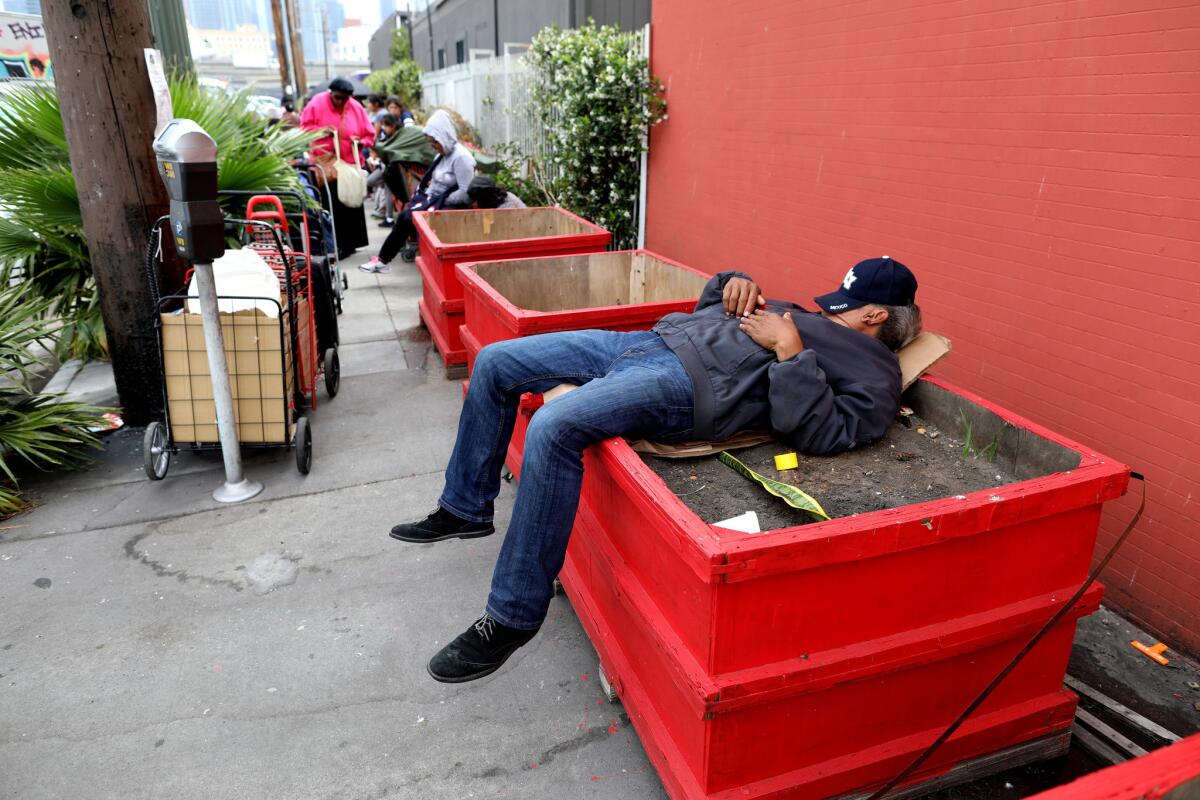
With dirt, they can weigh hundreds of pounds. The makeshift planter boxes are Peter Mozgo’s creations — roughly 140 of them lined up on the sidewalk to prevent homeless people from pitching tents outside his business.
Mozgo acquires the boxes from a Bell Gardens company that imports ginger, paints them firetruck red, pays $120 per cubic yard for dirt and then uses a $900 trailer to haul it all back to his neighborhood on the south end of downtown Los Angeles.
Like many L.A. residents and business owners, the 49-year-old says he is frustrated by the growing homelessness crisis — and the city’s often uneven response to it.
So as the city struggles to clear encampments and get a handle on the trash and chaos that sometimes emanate from them, Mozgo and others increasingly are taking matters into their own hands, putting obstacles in public spaces to protect their homes and businesses. By doing that, they can make homeless people feel unwelcome.
Every day, Mozgo says, he evaluates the condition of South Hope Street between Washington Boulevard and 18th Street: “How many tents do we have today? And who came in? And who moved out? And who flipped my boxes? And who graffiti-ed the front of my work?”
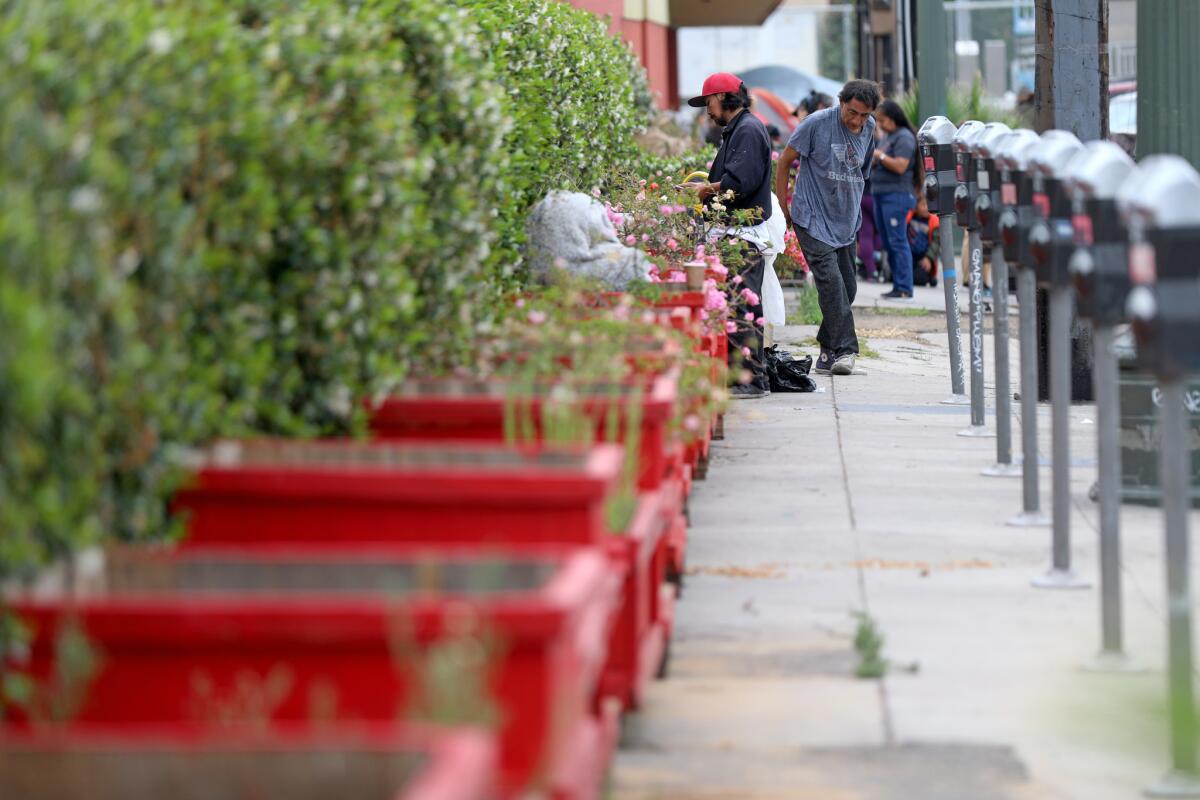
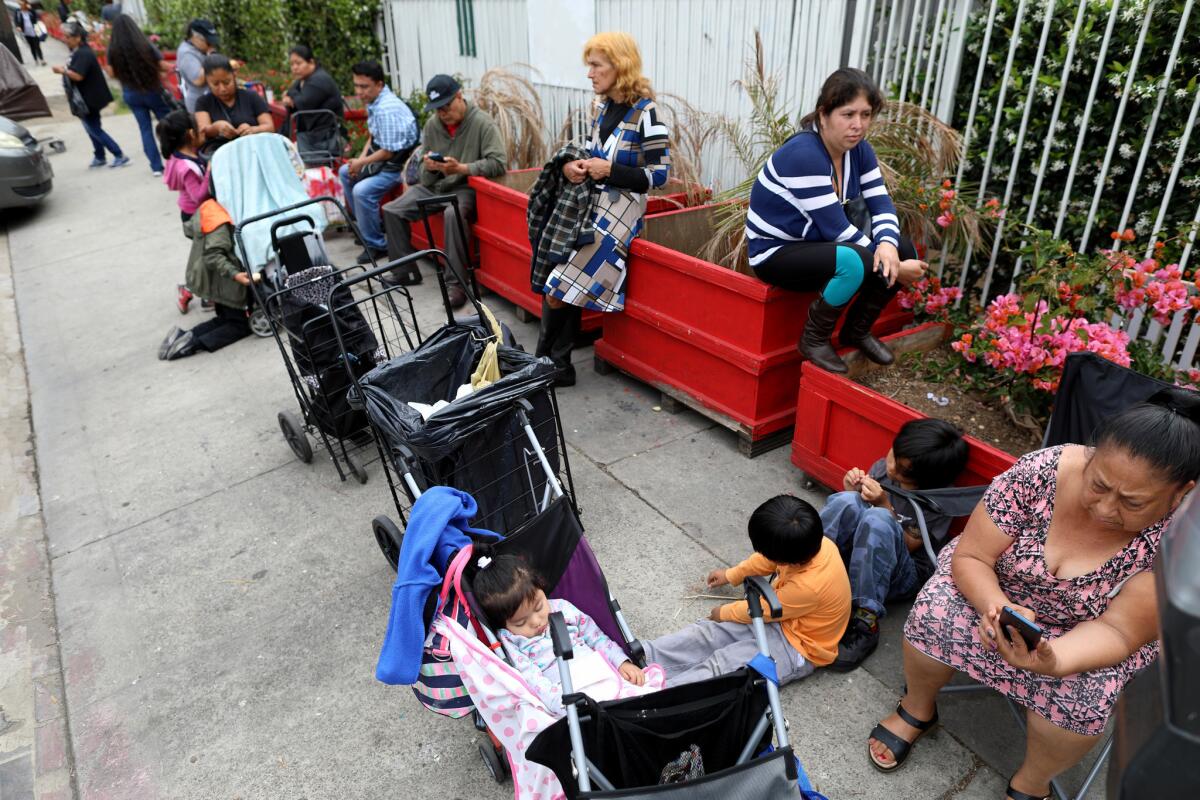
L.A. has struggled to stymie the growing number of obstructions that residents and business owners are creating to target homeless people. There are now about 59,000 people without homes in L.A. County. Within the city of Los Angeles, the population soared 16% this year to more than 36,000 — the majority of whom are living outdoors on city streets.
In parts of South L.A., business owners have built chain link fences around their buildings. Venice has seen a proliferation of sidewalk planters. In Koreatown, orange mesh fences are so common that a Twitter account documenting their existence has sprouted up. Still other Angelenos have taken to planting rosebushes and pointy cactuses in the “furniture zone,” the city’s designation for the sometimes paved and sometimes grassy area between the sidewalk and street.
That’s where obstacles are being placed the most, usually without permission from the city.
“In general, a lot of things people have [put] in the public right of way aren't permitted,” said Ted Allen, deputy city engineer.
The Los Angeles City Council recently passed a motion, introduced by President Herb Wesson, that calls on several city agencies “to work together to investigate and remove illegal fencing citywide that restricts free passage in the public right-of-way and report to council on these efforts.”
For Mozgo and his wife, Maria, the idea for planters began about two years ago after they opened the Hungarian Cultural Alliance — a venue they hoped would give their fellow ex-pats a place to take classes and enjoy Hungarian music and stand-up comedy, among other things. Mozgo’s wife also runs a law practice from the building.
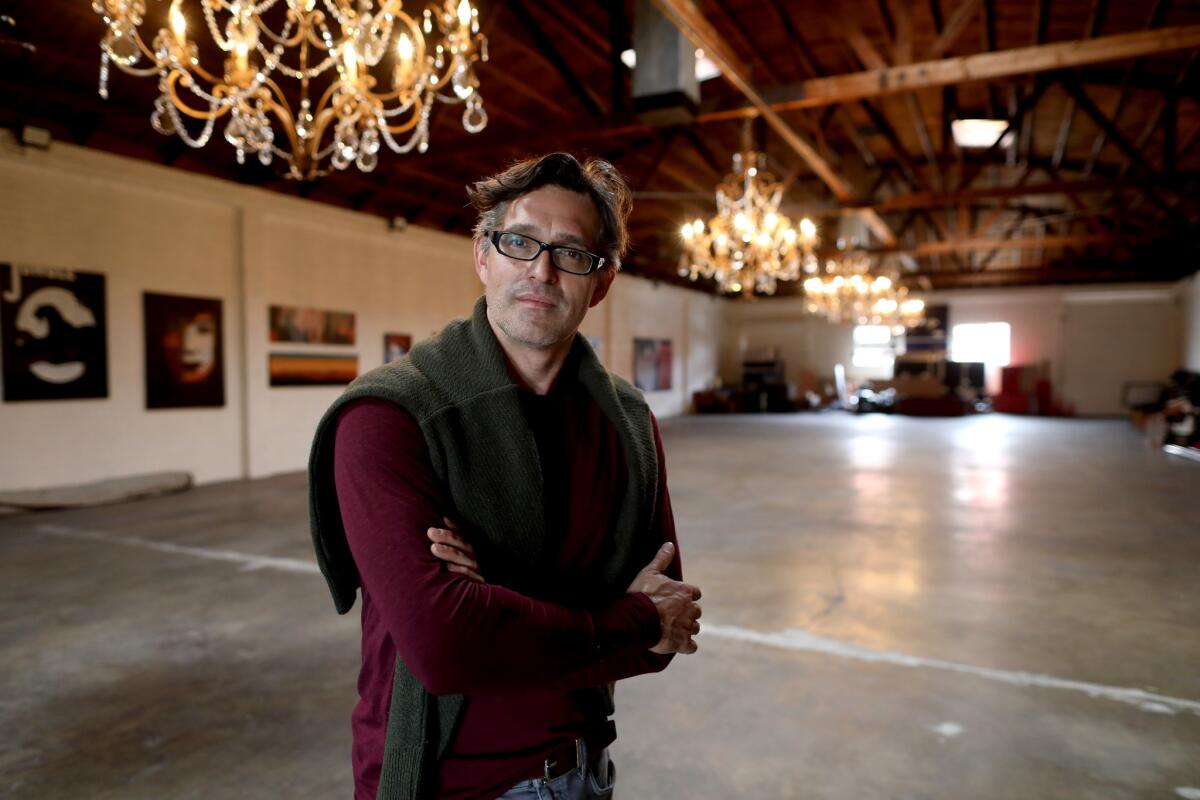
To pay the rent, they had hoped to host weddings and film shoots. But homeless people soon began to line the block. St. Francis Center, which offers free meals and showers several times a week, is next door.
“We lost so much weddings because people don't want to rent it anymore,” Mozgo said.
Even after the couple dropped the price, they said, they still would receive text messages such as: “I'm sorry, I really like your place, but the street is unacceptable.”
The block was scattered with barbecue grills, generators and flat-screen TVs. The couple lodged 311 requests in hopes that the street would be cleaned and the camps cleared.
Mozgo began placing planter boxes on the sidewalk, admittedly without permits. The cops haven’t given him any trouble.
So far, the obstacles have been effective. South Hope Street is now cleaner, many say. Even the few homeless people who remain note the number of people camping has declined, with most huddled together at the one corner where Mozgo hasn’t had the chance to place planter boxes. They also say the planter boxes have become a magnet for rats.
“To get rid of space for tents, I can see it from their perspective,” said David Canup, who has been homeless in the neighborhood for seven months. “But there’s more of a feeling that we’re being pushed out.”
The area has become much quieter, and Canup says the homeless people who are left make every effort to keep things clean. Even so, the planters contribute to a feeling of not being welcomed — here or anywhere.
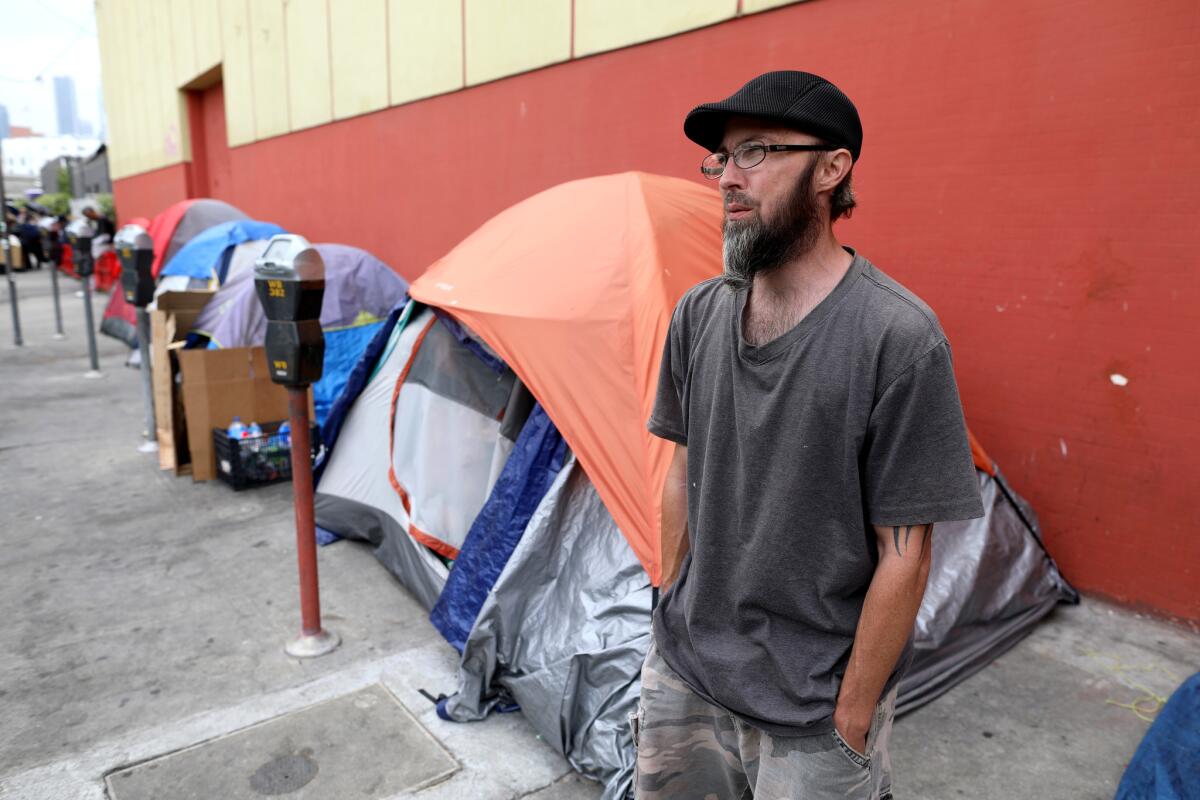
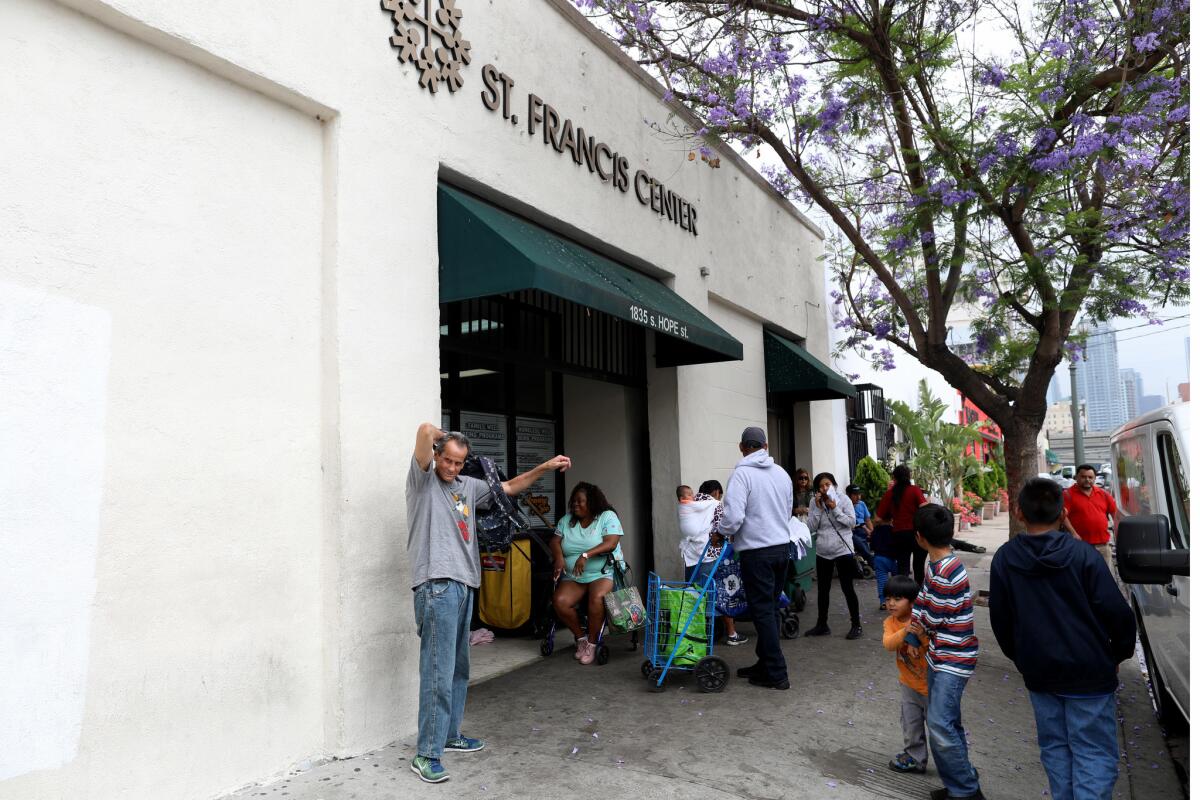
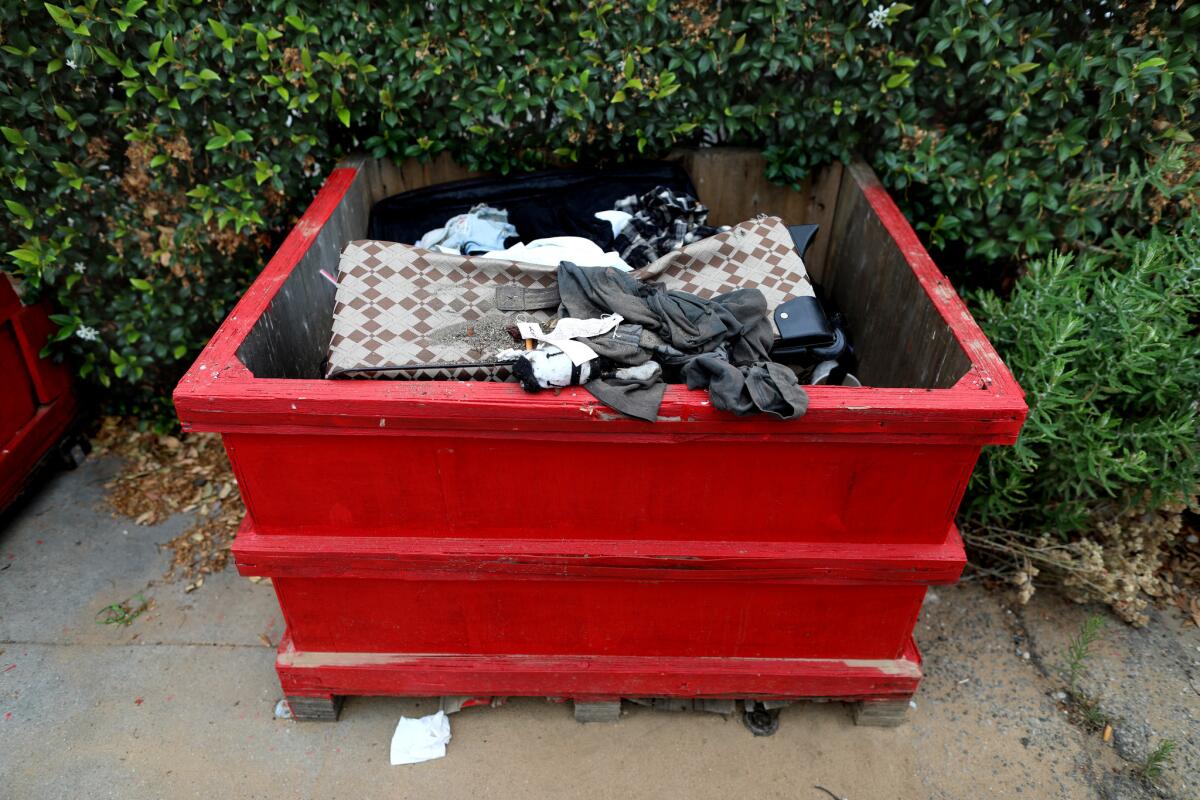
Business owners in an industrial area east of USC installed 4-foot-high chain-link fences down the middle of the sidewalk that surrounds their buildings, in an act of what they called desperation.
For months, they said, they had called the city’s 311 hotline, seeking relief from encampments along Broadway and Hill streets. They complained of general filth and homeless people setting fires, using drugs and engaging in prostitution.
After the fences went up, the encampments disappeared.
“The only thing we found that actually helps a little bit is putting these fences up in front of our buildings,” said Daniel Tennenblatt, who owns a textile manufacturing plant in the area. “And that’s so when someone lights a fire, it burns on the sidewalk and doesn’t burn the building down.”
But for Tennenblatt and others, it resulted in citations from the Bureau of Street Services that could lead to fines of $750.
Although fences and planters are illegal on sidewalks, the city rarely removes them, business owners say. The city Bureau of Street Services only enforces citations on obstructions after complaints are filed, spokeswoman Elena Stern said.
“The city will continue to cite illegal fencing and planters that restrict … the public right of way,” she said.
In an apparent acknowledgment of the difficulties the city is facing, the Board of Public Works created a working group to study how the city’s permitting process could be updated to better address such issues.
The group has yet to meet, according to Allen, the deputy city engineer.
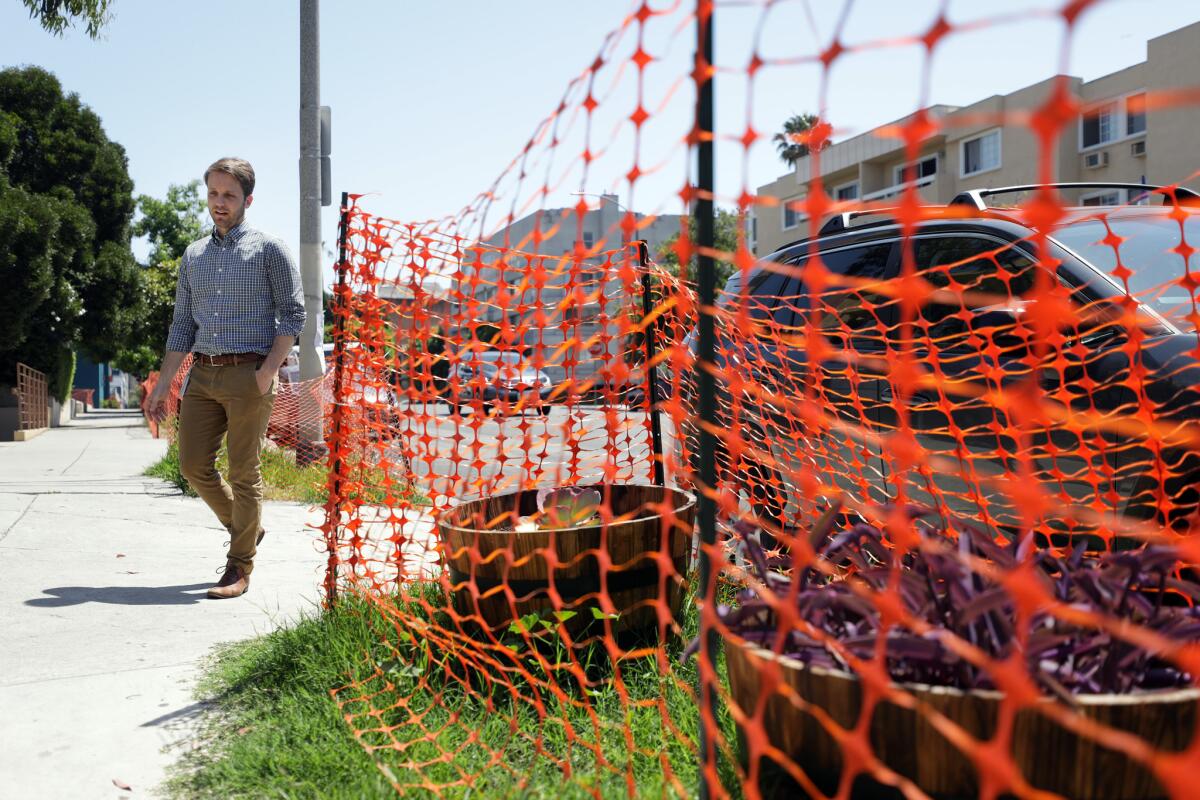
A type of permit does exist to allow some encroachments into the right of way, but it’s mostly used for things such as outdoor seating at restaurants. Planting rosebushes and spiked cactuses is not allowed, said Allen — adding that Los Angeles has a list of what’s allowed to be planted in those spaces.
“There's a desire to balance wanting to allow nice improvements in the public right of way but not having them misused,” Allen said. “I think we're not sure how we're going to arrive at that, but that's the goal.”
Chris Homandberg, a Koreatown resident and activist with the homeless outreach and advocacy group KTown for All, makes it his business to complain about the fences, planters and rosebushes that have been proliferating in his neighborhood.
On a recent afternoon, Homandberg surveyed several blocks, pointing out orange fences surrounding an area of the sidewalk where trees are planted. Then he passed by St. Basil’s Catholic Church, where someone had planted rosebushes with thorns next to the sidewalk where someone might otherwise put a tent.
“There’s some metaphor in there about a crown of thorns,” he joked.
Homandberg has filed more than a dozen complaints through 311, and some sidewalk obstructions have been taken down as a result.
“These issues go unaddressed and allow property owners to do what they want to get people out of sight. That’s a problem,” he said. “My goal is not to get people in trouble. It’s to work on this idea that you can’t address [homelessness] by pushing people around.”
Homandberg says planters or fences frequently pop up after cleanups by the Bureau of Street Services. That’s what happened last year in Venice.
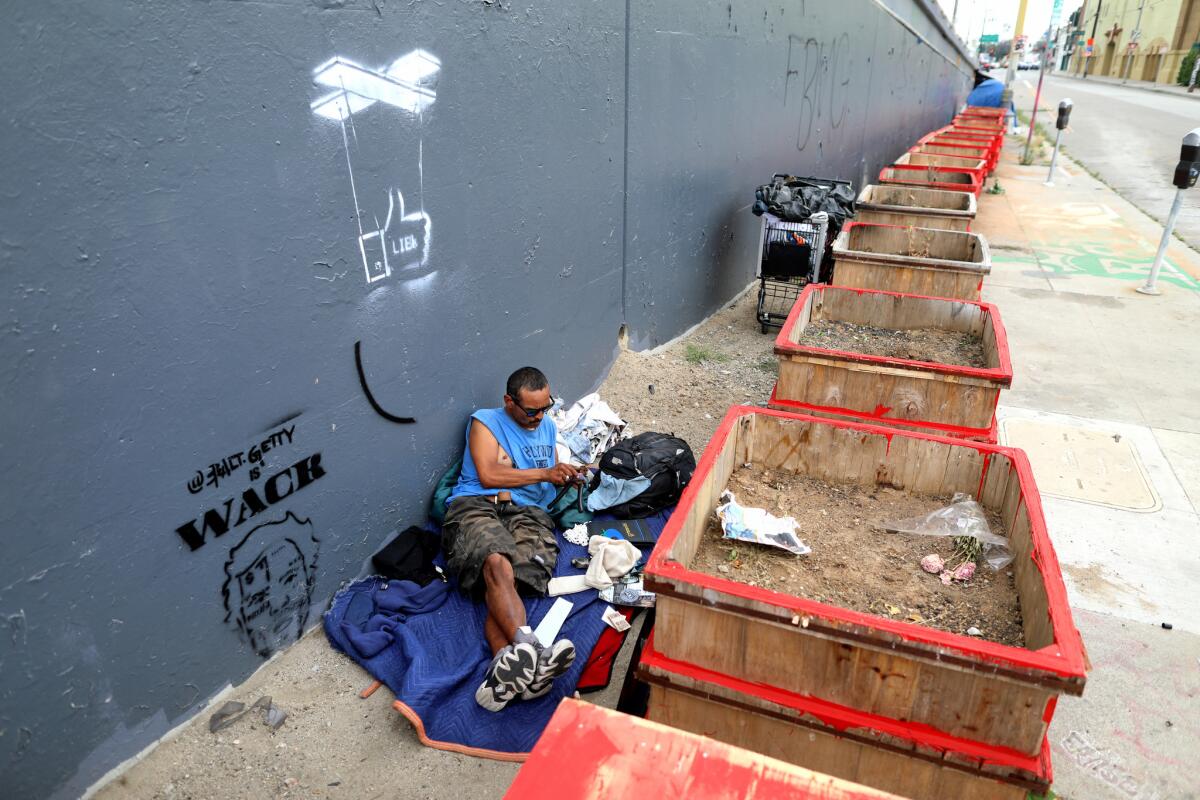
Activist Mark Ryavec — a frequent critic of Mayor Eric Garcetti and Councilman Mike Bonin, whose district includes Venice — has helped coordinate efforts to install planters to prevent homeless people from setting up tents on the streets. He said they were inspired by locals who had planted a community vegetable garden.
Ryavec helped raise $35,000 and installed 55 planter boxes along Grand Avenue next to a post office. It made the area look nicer, he said.
Then other residents, threatened by a nearby homeless encampment after a spate of thefts, asked Ryavec to help them raise $4,000 to build eight planters near Harding Avenue and Lincoln Boulevard.
Ryavec emailed a Bonin staffer, Taylor Bazley, who then got a staffer from Garcetti’s office to organize a cleanup of the encampment, according to emails released by Adrian Riskin, a blogger on MichaelKohlhaas.org. The unpermitted planter boxes were installed right after the cleanup.
In his role, Bazley said he often heard from residents who were desperately searching for ways to keep their streets clean. In this instance, he said he didn’t know that the planters were going to be installed.
David Graham-Caso, a spokesman for Bonin, said the councilman did not “condone or encourage” the illegal installation of planters. He added that Bazley no longer worked for Bonin.
Garcetti spokesman Alex Comisar said the mayor’s office wasn’t aware “of any plans to place planters at this location after the cleanup, and [we] are currently looking into this issue across the city.”
Times staff writer Doug Smith contributed to this report.
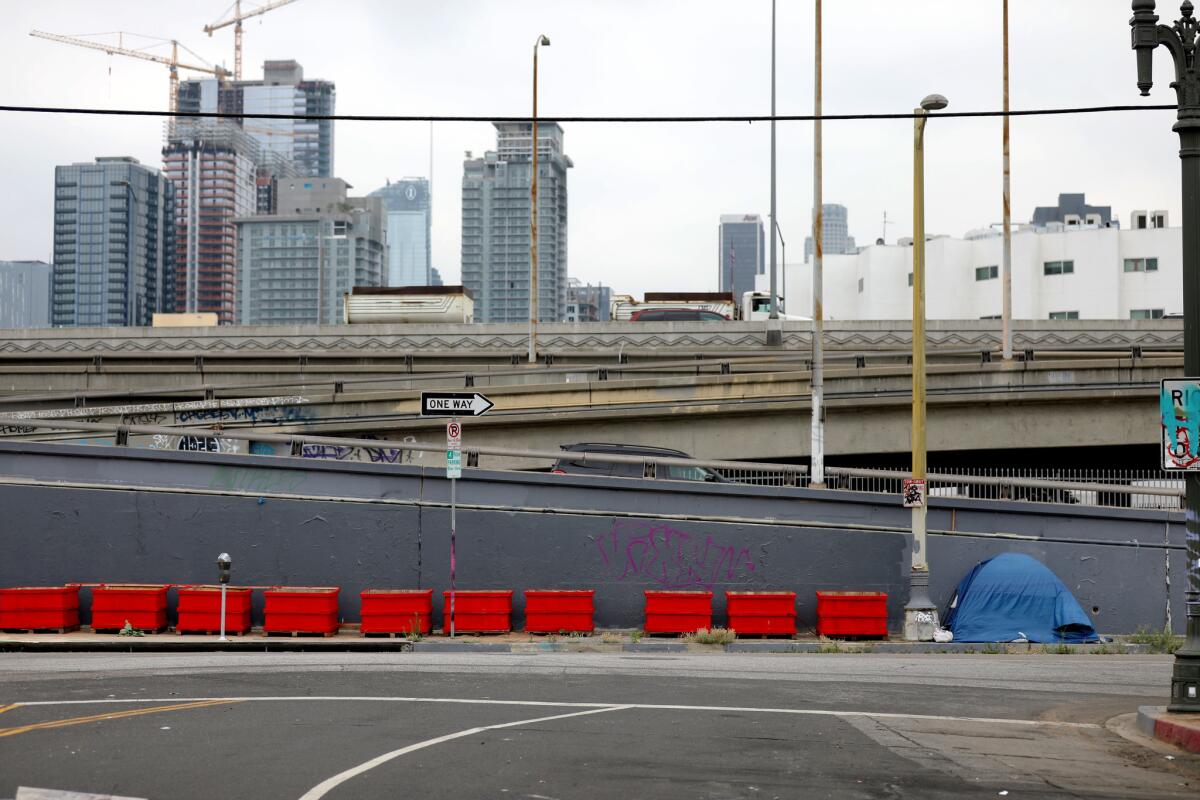
Sign up for Essential California
The most important California stories and recommendations in your inbox every morning.
You may occasionally receive promotional content from the Los Angeles Times.








